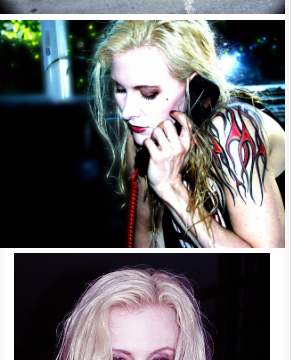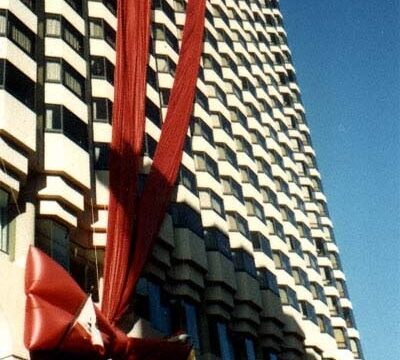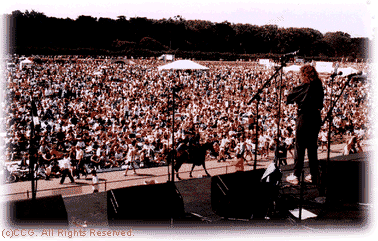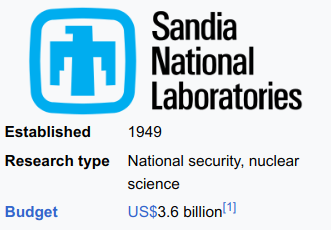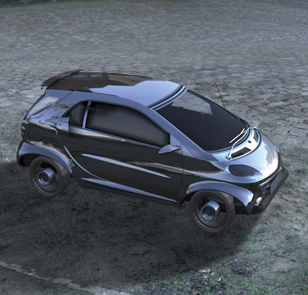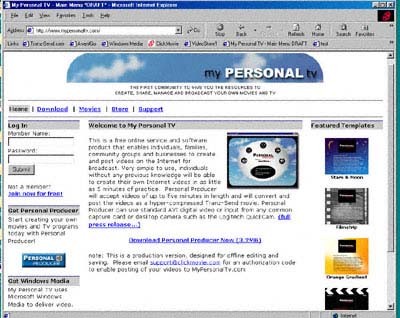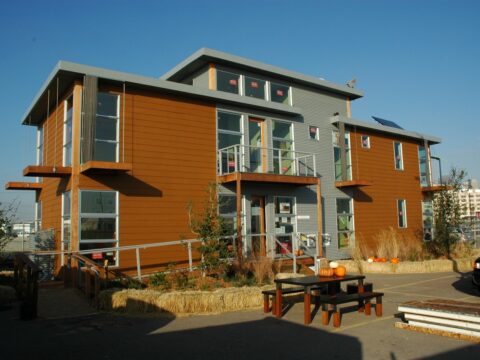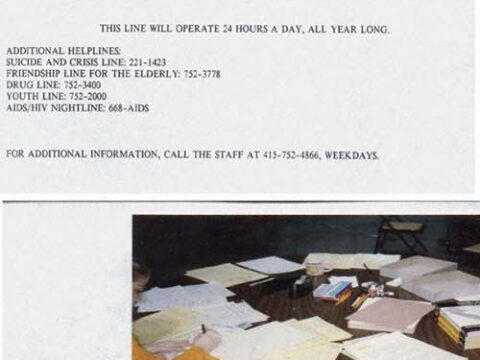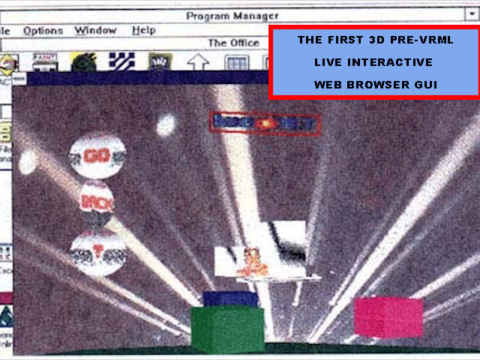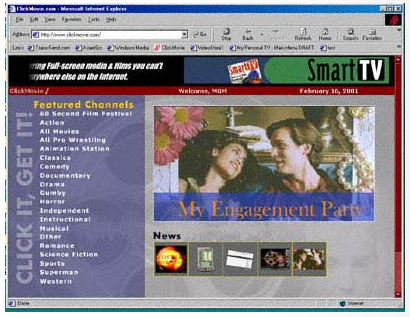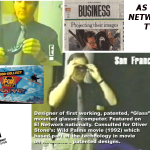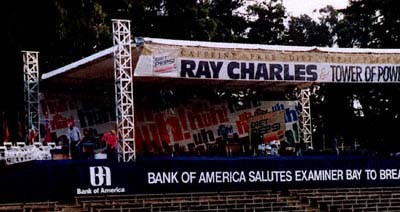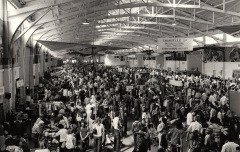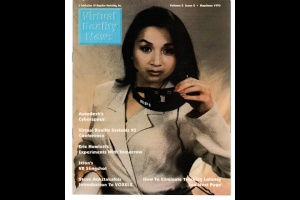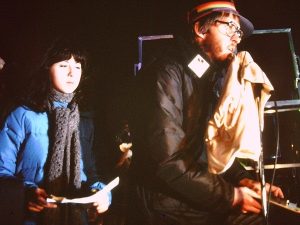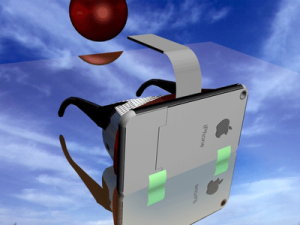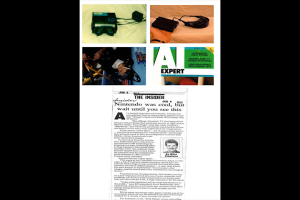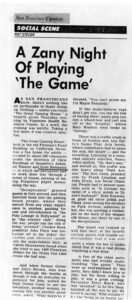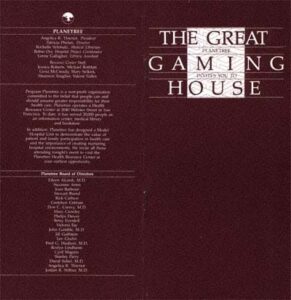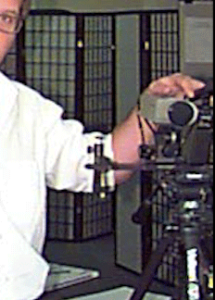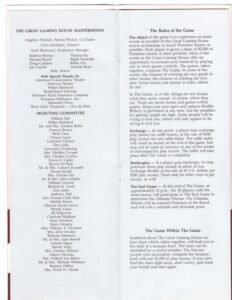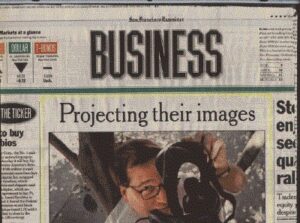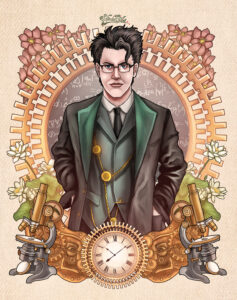One of Scott’s first encounters with Robin was when we had the San Francisco Civic Auditorium booked for a concert. We suddenly got a call from Dave Allen. In case you do not know who that is, David Allen, was the owner of the Boarding House nightclub, who nurtured and booked hundreds of musicians and comedians during his career, he died May 25, 1984 in San Francisco of a chest aneurysm. He was 65. The genial New Jersey-born nightclub operator moved to the city after World War II and opened a target range on the top floor of the California Hall on Polk Street. In 1949, he performed with a repertory theater at 960 Bush St. That same year he began working with KPIX. He later performed as “Deputy Dave” on a KPIX children’s show for eight years. During the 1960s, he worked for Enrico Banducci at the hungry i when the club gave Barbra Streisand her first nightclub job and nurtured the career of Lenny Bruce. In 1971, Allen returned to 960 Bush – this time opening the 300-seat Boarding House. Allen booked many music and comedy stars early in their careers, including Steve Martin, Bette Midler, Robin Williams, Lily Tomlin, the Pointer Sisters and Dolly Parton.
He was calling because The Boarding House was getting a rent raise and they needed to raise funds fast. David had gotten some of his best past talent to agree to a one night fund-raiser for the Boarding House but the only date they could get all of the acts together was the night we already had the Civic Auditorium booked for. We agreed to turn our date over to Dave so that he could do his event and David gave us a pack of front row seats as a Thank you.
If we had not agreed to do that, this would never have happened:
Steve Martin had performed and just destroyed it. A little while into the show, David Allen came on stage and said that the next act was a “new guy” that was one of the funniest people he had ever seen…out came Robin William’s. Robin completely free-styled the whole show and even blew Steve Martin’s act away. Robin notice a huge round lighting unit in the ceiling of the auditorium and went off on an insane riff about it being the mother ship from Close Encounters coming in for a landing.
In the audience were some TV show producers who had flown in to see Steve Martin perform and were considering him for a TV show. When they experienced Robin, though, everything changed.
Dave Allen introduced me to Robin after the show and Robin said he would be back at the Boarding House in a few months and told Dave to comp me some tickets. Robin had to cancel his planned return to the Boarding House because… Those TV producers in the audience had decided, there and then, that the TV series they must produce must star Robin Williams. The show became Mork and Mindy and the rest is history. If I had not given up my concert date, that sequence of events would not have happened and Mork and Mindy might not have happened.
Dave Allen explained that “… none of Robin’s acts are scripted, he has a kind of visually triggered autism that allows him to instantly explain anything he sees in comedic terms…”
We worked with Robin, again on a March of Dimes Walkathon and often ran into him around Mill Valley. He was a cool dude.
Robin McLaurin Williams (July 21, 1951 – August 11, 2014) was an American actor and comedian. Known for his improvisational skills[1][2] and the wide variety of characters he created on the spur of the moment and portrayed on film, in dramas and comedies alike,[3][4] he is regarded as one of the greatest comedians of all time.[5][6][7] He received numerous accolades including an Academy Award, two Primetime Emmy Awards, six Golden Globe Awards, two Screen Actors Guild Awards, and five Grammy Awards.
Williams began performing stand-up comedy in San Francisco and Los Angeles during the mid-1970s, and released several comedy albums including Reality … What a Concept in 1980.[8] He rose to fame playing the alien Mork in the ABC sitcom Mork & Mindy (1978–1982).[9] He received his first leading film role in Popeye (1980). Williams went on to win the Academy Award for Best Supporting Actor for Good Will Hunting (1997). His other Oscar-nominated roles were for Good Morning, Vietnam (1987), Dead Poets Society (1989), and The Fisher King (1991).
Williams starred in the critically acclaimed dramas The World According to Garp (1982), Moscow on the Hudson (1984), Dead Poets Society (1989), Awakenings (1990), Patch Adams (1998), Insomnia (2002), One Hour Photo (2002), and World’s Greatest Dad (2009). He also starred in family films such as Hook (1991), Mrs. Doubtfire (1993), Jumanji (1995), Jack (1996), Flubber (1997), RV (2006), and the Night at the Museum trilogy (2006–2014). He lent his voice to the animated films Aladdin (1992), Robots (2005), Happy Feet (2006), and its 2011 sequel.
Williams was found dead at his home in Paradise Cay, California on August 11, 2014, at the age of 63. At the time of his suicide, he had been diagnosed with Parkinson’s disease.[10] According to his widow, Williams had experienced depression, anxiety, and increasing paranoia.[11] His autopsy found “diffuse Lewy body disease”[12][10] and Lewy body dementia professionals said his symptoms were consistent with dementia with Lewy bodies.[13][14][12]
Early life
Williams was born at St. Luke’s Hospital in Chicago, Illinois,[15] on July 21, 1951.[16] His father, Robert Fitzgerald Williams (1906–1987), was a senior executive in Ford‘s Lincoln-Mercury Division.[17][18] His mother, Laurie McLaurin (1922–2001), was a former model from Jackson, Mississippi, whose great-grandfather was Mississippi senator and governor Anselm J. McLaurin.[19] Williams had two older half-brothers: a paternal half-brother, Robert (also known as Todd),[20] and a maternal half-brother, McLaurin.[21] While his mother was a practitioner of Christian Science, Williams was raised in his father’s Episcopal faith.[22][23] During a television interview on Inside the Actors Studio in 2001, Williams credited his mother as an important early influence on his humor, and he tried to make her laugh to gain attention.[24]
Williams attended public elementary school in Lake Forest at Gorton Elementary School and middle school at Deer Path Junior High School.[25] He described himself as a quiet child who did not overcome his shyness until he became involved with his high school drama department.[26] His friends recall him as very funny.[25] In late 1963, when Williams was 12, his father was transferred to Detroit. The family lived in a 40-room farmhouse on 20 acres (8 ha)[17] in suburban Bloomfield Hills, Michigan, where he was a student at the private Detroit Country Day School.[25][27] He excelled in school, where he was on the school’s wrestling team and was elected class president.[28]
As both his parents worked, Williams was partially raised by the family’s maid, who was his main companion. When he was 16, his father took early retirement and the family moved to Tiburon, California.[17][29][30] Following their move, Williams attended Redwood High School in nearby Larkspur. At the time of his graduation in 1969, he was voted “Most Likely Not to Succeed” and “Funniest” by his classmates.[31] After high school graduation, Williams enrolled at Claremont Men’s College in Claremont, California, to study political science; he dropped out to pursue acting.[17][32] Williams studied theater for three years at the College of Marin, a community college in Kentfield, California. According to the College of Marin’s drama professor, James Dunn, the depth of the young actor’s talent became evident when he was cast in the musical Oliver! as Fagin. Williams often improvised during his time in the drama program, leaving cast members in hysterics.[33] Dunn called his wife after one late rehearsal to tell her Williams “was going to be something special”.[33]
In 1973, Williams attained a full scholarship to the Juilliard School (Group 6, 1973–1976) in New York City. He was one of 20 students accepted into the freshman class, and he and Christopher Reeve were the only two accepted by John Houseman into the Advanced Program at the school that year. William Hurt and Mandy Patinkin were also classmates.[34][35] According to biographer Jean Dorsinville, Franklyn Seales and Williams were roommates at Juilliard.[36] Reeve remembered his first impression of Williams when they were new students at Juilliard: “He wore tie-dyed shirts with tracksuit bottoms and talked a mile a minute. I’d never seen so much energy contained in one person. He was like an untied balloon that had been inflated and immediately released. I watched in awe as he virtually caromed off the walls of the classrooms and hallways. To say that he was ‘on’ would be a major understatement.”[35]
Williams and Reeve had a class in dialects taught by Edith Skinner, who Reeve said was one of the world’s leading voice and speech teachers; according to Reeve, Skinner was bewildered by Williams and his ability to instantly perform in many different accents. Their primary acting teacher was Michael Kahn, who was “equally baffled by this human dynamo”.[35] Williams already had a reputation for being funny, but Kahn criticized his antics as simple stand-up comedy. In a later production, Williams silenced his critics with his well-received performance as an old man in Tennessee Williams‘s Night of the Iguana. Reeve wrote, “He simply was the old man. I was astonished by his work and very grateful that fate had thrown us together.”[35] The two remained close friends until Reeve’s death in 2004. Their friendship was like “brothers from another mother”, according to Williams’s son Zak.[37]
During the summers of 1974, 1975, and 1976, Williams worked as a busboy at The Trident in Sausalito, California.[38] He left Juilliard[39][40] during his junior year in 1976 at the suggestion of Houseman, who said there was nothing more Juilliard could teach him.[34][41] Gerald Freedman, another of his teachers at Juilliard, said Williams was a “genius” and that the school’s conservative and classical style of training did not suit him; no one was surprised that he left.[42]
Career
Stand-up comedy

Williams began performing stand-up comedy in the San Francisco Bay Area in 1976.[43] In the 1960s, San Francisco was a center for a rock music renaissance, hippies, drugs, and a sexual revolution, and in the late 1970s, Williams helped lead its “comedy renaissance”, writes critic Gerald Nachman.[8]: 6 Williams says he found out about “drugs and happiness” during that period, adding that he saw “the best brains of my time turned to mud”.[34]
Williams moved to Los Angeles and continued performing stand-up at clubs, including The Comedy Store. There, in 1977, he was seen by TV producer George Schlatter, who asked him to appear on a revival of his show Laugh-In. The show aired in late 1977 and was his debut TV appearance.[34] That year, Williams also performed a show at the L.A. Improv for Home Box Office.[45] While the Laugh-In revival failed, it led Williams into his television career; he continued performing stand-up at comedy clubs such as the Roxy to help keep his improvisational skills sharp.[34][46] In England, Williams performed at The Fighting Cocks.[citation needed]
With his success on Mork & Mindy, Williams began to reach a wider audience with his stand-up comedy, starting in the late 1970s and throughout the 1980s, including three HBO comedy specials: Off The Wall (1978), An Evening with Robin Williams (1983), and A Night at the Met (1986).[47] Williams won a Grammy Award for Best Comedy Album for the recording of his 1979 live show at the Copacabana in New York City, Reality … What a Concept.[48]
David Letterman, who knew Williams for nearly 40 years, recalls seeing him first perform as a new comedian at The Comedy Store in Hollywood, where Letterman and other comedians had already been doing stand-up. “He came in like a hurricane”, said Letterman, who said he then thought to himself, “Holy crap, there goes my chance in show business.”[49]

Williams said that, partly due to the stress of performing stand-up, he started using drugs and alcohol early in his career. He further said that he neither drank nor took drugs while on stage, but occasionally performed when hung over from the previous day. During the period he was using cocaine, he said it made him paranoid when performing on stage.[50]
Williams once described the life of stand-up comedians as follows:
It’s a brutal field, man. They burn out. It takes its toll. Plus, the lifestyle—partying, drinking, drugs. If you’re on the road, it’s even more brutal. You gotta come back down to mellow your ass out, and then performing takes you back up. They flame out because it comes and goes. Suddenly they’re hot, and then somebody else is hot. Sometimes they get very bitter. Sometimes they just give up. Sometimes they have a revival thing and they come back again. Sometimes they snap. The pressure kicks in. You become obsessed and then you lose that focus that you need.[8]: 34–35
Some, such as the critic Vincent Canby, were concerned that his monologues were so intense that it seemed as though at any minute his “creative process could reverse into a complete meltdown”.[51] His biographer, Emily Herbert, described his “intense, utterly manic style of stand-up [which sometimes] defies analysis … [going] beyond energetic, beyond frenetic … [and sometimes] dangerous … because of what it said about the creator’s own mental state”.[51]
Williams felt secure that he would not run out of ideas, as the constant change in world events would keep him supplied.[50] He also explained that he often used free association of ideas while improvising to keep the audience interested.[52] The competitive nature of the show made things difficult. For example, some comedians said that Williams had stolen their jokes, which Williams strongly denied.[50][53][54] David Brenner claims that he confronted Williams’s agent and threatened bodily harm if he heard Williams utter another one of his jokes.[55][56] Whoopi Goldberg defended him, asserting that it is difficult for comedians not to reuse another comedian’s material, and that it is done “all the time”.[57] He later avoided going to performances of other comedians to deter similar accusations.[57]
During a Playboy interview in 1992, Williams was asked whether he ever feared losing his balance between his work and his life. He replied, “There’s that fear—if I felt like I was becoming not just dull but a rock, that I still couldn’t speak, fire off or talk about things, if I’d start to worry or got too afraid to say something. … If I stop trying, I get afraid.” While he attributed the recent suicide of novelist Jerzy Kosiński to his fear of losing his creativity and sharpness, Williams felt he could overcome those risks. For that, he credited his father for strengthening his self-confidence, telling him to never be afraid of talking about subjects which were important to him.[50]
Williams’s stand-up work was a consistent thread throughout his career, as seen by the success of his one-man show (and subsequent DVD) Robin Williams: Live on Broadway (2002). In 2004, he was voted 13th on Comedy Central‘s list of “100 Greatest Stand-ups of All Time”.[58] After a six-year hiatus, in August 2008, Williams announced a new 26-city tour, Weapons of Self-Destruction. The tour began at the end of September 2009 and concluded in New York on December 3, and was the subject of an HBO Special on December 8, 2009.[59]
Television
Mork & Mindy
After the Laugh-In revival and appearing in the cast of The Richard Pryor Show on NBC, Williams was cast by Garry Marshall as the alien Mork in a 1978 episode of the TV series Happy Days, “My Favorite Orkan“.[34][60] Sought after as a last-minute cast replacement for a departing actor, Williams impressed the producer with his quirky sense of humor when he sat on his head when asked to take a seat for the audition.[61] As Mork, Williams improvised much of his dialogue and physical comedy, speaking in a high, nasal voice, and he made the most of the script. The cast and crew, as well as TV network executives, were deeply impressed with his performance. As such, the executives moved quickly to get the performer on contract just four days later before competitors could make their own offers.[62]
Mork’s appearance proved so popular with viewers that it led to the spin-off television sitcom Mork & Mindy, which co-starred Pam Dawber, and ran from 1978 to 1982; the show was written to accommodate his extreme improvisations in dialogue and behavior. Although he portrayed the same character as in Happy Days, the series was set in the present in Boulder, Colorado, instead of the late 1950s in Milwaukee. Mork & Mindy at its peak had a weekly audience of sixty million and was credited with turning Williams into a “superstar”.[34] Among young people, the show was very popular because Williams became “a man and a child, buoyant, rubber-faced, an endless gusher of ideas,” according to critic James Poniewozik.[63]

Mork became popular, featured on posters, coloring books, lunch-boxes, and other merchandise.[64] Mork & Mindy was such a success in its first season that Williams appeared on the March 12, 1979, cover of Time magazine.[65][66] The cover photo, taken by Michael Dressler in 1979, is said to have “[captured] his different sides: the funnyman mugging for the camera, and a sweet, more thoughtful pose that appears on a small TV he holds in his hands” according to Mary Forgione of the Los Angeles Times.[67] This photo was installed in the National Portrait Gallery in the Smithsonian Institution shortly after his death to allow visitors to pay their respects.[67] Williams also appeared on the cover of the August 23, 1979, issue of Rolling Stone, photographed by Richard Avedon.[68][69]
Later appearances
Starting in the late 1970s and throughout the 1980s, Williams began to reach a wider audience with his stand-up comedy, including three HBO comedy specials, Off the Wall (1978), An Evening with Robin Williams (1983), and A Night at the Met (1986). In 1986, Williams co-hosted the 58th Academy Awards.[70] Williams was also a regular guest on various talk shows, including The Tonight Show Starring Johnny Carson[71] and Late Night with David Letterman, on which he appeared 50 times.[49]
Williams appeared with fellow comedian Billy Crystal in an unscripted cameo at the beginning of an episode of the third season of Friends.[72] His many television appearances included an episode of Whose Line Is It Anyway?,[73] and he starred in an episode of Law & Order: Special Victims Unit. In 2006, Williams was the Surprise Guest at the Nickelodeon Kids’ Choice Awards,[74] and appeared on an episode of Extreme Makeover: Home Edition that aired on January 30.[75] In 2010, he appeared in a sketch with Robert De Niro on Saturday Night Live, and in 2012, he guest-starred as himself in two FX series, Louie and Wilfred.[76] In May 2013, CBS started a new series, The Crazy Ones, starring Williams,[77] but the show was canceled after one season.[78]
Film
The first film role credited to Robin Williams is a small part in the 1977 low-budget comedy Can I Do It… ‘Til I Need Glasses?. His first starring performance, however, is as the title character in Popeye (1980), in which Williams showcased the acting skills previously demonstrated in his television work; accordingly, the film’s commercial disappointment was not blamed on his performance.[79][80] He went on to star as the leading character in The World According to Garp (1982), which Williams considered “may have lacked a certain madness onscreen, but it had a great core”.[44] He continued with other smaller roles in less successful films, such as The Survivors (1983) and Club Paradise (1986), though he said these roles did not help advance his film career.[44]
His first major break came from his starring role in director Barry Levinson‘s Good Morning, Vietnam (1987), which earned Williams a nomination for the Academy Award for Best Actor.[60] The film is set in 1965 during the Vietnam War, with Williams playing the role of Adrian Cronauer, a radio shock jock who keeps the troops entertained with comedy and sarcasm. Williams was allowed to play the role without a script, improvising most of his lines. Over the microphone, he created voice impressions of people, including Walter Cronkite, Gomer Pyle, Elvis Presley, Mr. Ed, and Richard Nixon.[44] “We just let the cameras roll”, said producer Mark Johnson, and Williams “managed to create something new for every single take”.[81]
Dramatic roles

Many of his subsequent roles were in comedies tinged with pathos, such as Mrs. Doubtfire and Patch Adams.[82] Looking over most of his filmography, one writer was “struck by the breadth” and radical diversity of most of the roles Williams portrayed.[83] In 1989, Williams played a private-school English teacher in Dead Poets Society, which included a final, emotional scene that some critics said “inspired a generation” and became a part of pop culture.[84] Similarly, his performance as a therapist in Good Will Hunting (1997) deeply affected even some real therapists.[85] In Awakenings (1990), Williams plays a doctor modeled after Oliver Sacks, who wrote the book on which the film is based. Sacks later said the way the actor’s mind worked was a “form of genius”. In 1991, he played an adult Peter Pan in the film Hook, although he had said he would have to lose 25 pounds for the role.[86] Terry Gilliam, who directed Williams in two of his films, The Fisher King (1991) and The Adventures of Baron Munchausen (1988), said in 1992 that Williams had the ability to “go from manic to mad to tender and vulnerable … [Williams had] the most unique mind on the planet. There’s nobody like him out there.”[50]
Other dramatic performances by Williams include Moscow on the Hudson (1984), What Dreams May Come (1998), and Bicentennial Man (1999).[87] During the early 2000s, Williams demonstrated a new rank of his versatility by playing darker roles than he had in the previous decades. In Insomnia (2002), Williams portrayed a murderer on the run from a sleep-deprived Los Angeles police detective (played by Al Pacino) in rural Alaska.[88] Also in 2002, in the psychological thriller One Hour Photo, Williams portrayed an emotionally disturbed photo development technician who becomes obsessed with a family for whom he has developed pictures for a long time.[89] In the 2004 science fiction psychological thriller The Final Cut, Williams played a professional who specializes in editing the memories of unsavory people into uncritical memorials that are played at funerals. The Angriest Man in Brooklyn was Williams’ last movie to be released while he was alive. In the movie, Williams played Henry Altmann, an angry, bitter man who tries to change his life after being told he has a terminal illness.[90]
Williams’ performances garnered him various accolades, including an Academy Award for Best Supporting Actor for his role in Good Will Hunting;[60] as well as two previous Academy Award nominations, for Dead Poets Society, and as a troubled homeless man in The Fisher King, respectively.[60] Among the actors who helped him during his acting career, he credited Robert De Niro, from whom he learned the power of silence and economy of dialogue when acting. From Dustin Hoffman, with whom he co-starred in Hook, he learned to take on totally different character types, and to transform his characters by extreme preparation. Mike Medavoy, producer of Hook, told its director, Steven Spielberg, that he intentionally teamed up Hoffman and Williams for the film because he knew they wanted to work together, and that Williams welcomed the opportunity of working with Spielberg.[91] Having Woody Allen, who directed him and Billy Crystal in Deconstructing Harry (1997), helped Williams. Allen knew that Crystal and Williams had often worked together on stage.[92]
Voice roles

While Williams voiced characters in several animated films, his voice role as the Genie in the animated musical Aladdin (1992) was written for him. The film’s directors said they had taken a risk by writing the role.[93] At first, Williams refused the role since it was a Disney movie, and he did not want the studio profiting by selling merchandise based on the movie. He accepted the role with certain conditions: “I’m doing it basically because I want to be part of this animation tradition. I want something for my children. One deal is, I just don’t want to sell anything—as in Burger King, as in toys, as in stuff.”[94] Williams improvised much of his dialogue, recording approximately 30 hours of tape,[17] and impersonated dozens of celebrities, including Ed Sullivan, Jack Nicholson, Robert De Niro, Groucho Marx, Rodney Dangerfield, William F. Buckley Jr., Peter Lorre, Arnold Schwarzenegger, and Arsenio Hall.[95] His role in Aladdin became one of his most recognized and best-loved, and the film was the highest-grossing of 1992; it won numerous awards, including a Special Golden Globe Award for Vocal Work in a Motion Picture for Williams.[96] His performance paved the way for other animated films to incorporate actors with more star power.[97] He was named a Disney Legend in 2009.[98]
Due to Disney breaking an agreement with Williams regarding the use of the Genie in the advertising for Aladdin, Williams refused to sign on for the direct-to-video sequel The Return of Jafar (1994), where the Genie was instead voiced by Dan Castellaneta. When Jeffrey Katzenberg was replaced by Joe Roth as Walt Disney Studios chairman, Roth organized a public apology to Williams.[99] Williams would, in turn, reprise the role in the second sequel, Aladdin and the King of Thieves (1996).[100]
Williams continued to provide voices in other animated films, including FernGully: The Last Rainforest (1992), Robots (2005), the Happy Feet film franchise (2006-2011), and an uncredited vocal performance in Everyone’s Hero (2006). He also voiced the holographic character Dr. Know in the live-action film A.I. Artificial Intelligence (2001). He was the voice of The Timekeeper, a former attraction at the Walt Disney World Resort about a time-traveling robot who encounters Jules Verne and brings him to the future.[101]
Later films
Years after the films, Janet Hirshenson revealed in an interview that Williams had expressed interest in portraying Rubeus Hagrid in the Harry Potter film series, but was rejected by director Chris Columbus due to the “British-only edict”.[102] In 2006, he starred in five movies, including Man of the Year, a political satire, and The Night Listener, a thriller about a radio show host who realizes that a child with whom he has developed a friendship may not exist.[87] Four films starring Williams were released after his death in 2014: Night at the Museum: Secret of the Tomb, A Merry Friggin’ Christmas, Boulevard, and Absolutely Anything.[103]
Stage work

Williams appeared opposite Steve Martin at Lincoln Center in an off-Broadway production of Waiting for Godot in 1988.[104][105] He headlined his own one-man show, Robin Williams: Live on Broadway, which played at the Broadway theater in July 2002.[106] He made his Broadway acting debut in Rajiv Joseph‘s Bengal Tiger at the Baghdad Zoo, which opened at the Richard Rodgers Theatre on March 31, 2011.[107]
Internet
Williams was the host of a talk show for Audible that aired in April 2000 and was only available on Audible’s website.[108][109]


